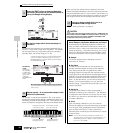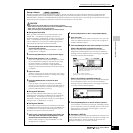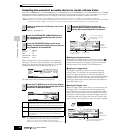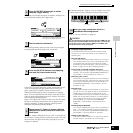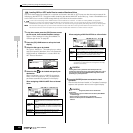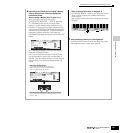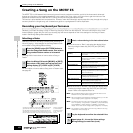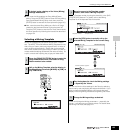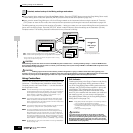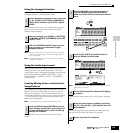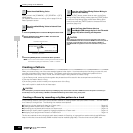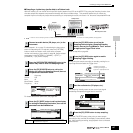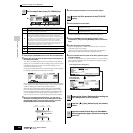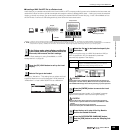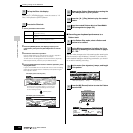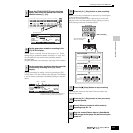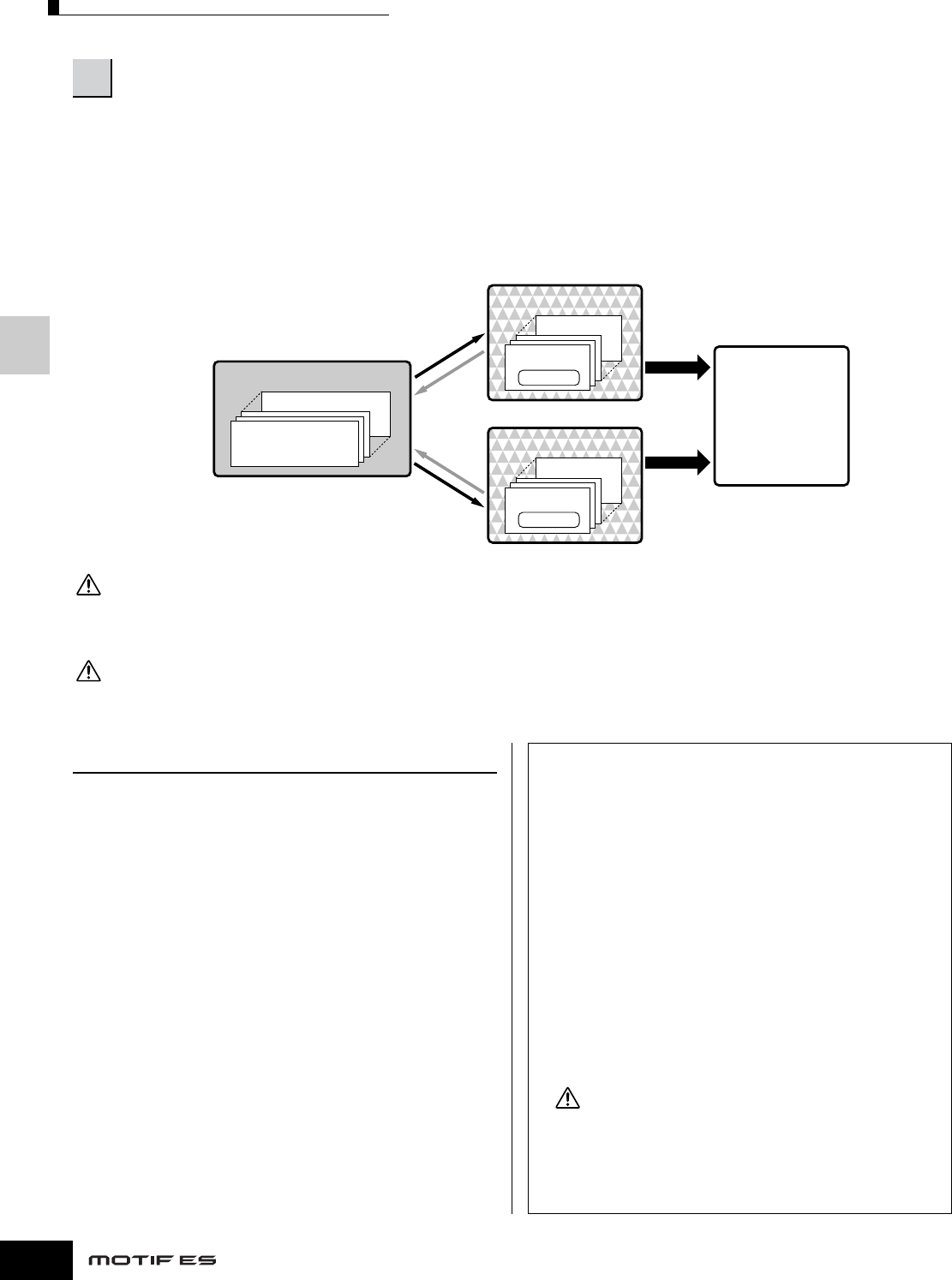
Creating a Song on the MOTIF ES
104
Owner’s Manual
Quick Guide — Advanced Course
● First, store the Voice settings as Song Mixing/Pattern Mixing. Press the [STORE] button to enter the Song Mixing Store mode/
Pattern Mixing Store mode, then press the [ENTER] button to execute the Store operation (page 131).
● Next, save the stored Song Mixing as a file for all Songs created on the instrument before turning the power off. Press the
[FILE] button to enter the File mode, then execute the Save operation by following the instructions described on page 132.
The Mixing settings you make can be stored as a Template — letting you create your own custom Mixing/Voice configurations for
future use in recording Songs. Press the [SF5] PUT button in step #4 above to store the settings to the destination (current)
Template number. The following illustration shows the memory structure for Mixing.
Whereas Mixing Template data resides in internal Flash ROM, Song data and Pattern data — including the Mixing settings — resides in DRAM. Because
data contained in DRAM is lost when the power is turned off, you should always save any data residing in DRAM to a SmartMedia/USB storage device in the
File mode before turning off the power.
The currently edited Mixing program will be lost when selecting a different Song/Pattern or going to a different mode without saving (putting) it to a
template or storing it to the current Song/Pattern. In addition, simply playing back the Song/Pattern or receiving any MIDI messages from an external MIDI
instrument may change the current Mixing program. Make sure to put or store the Mixing program before executing these operations.
Using Controllers
Just as in the Voice/Performance mode, the controllers of the
instrument — Pitch Bend wheel, Modulation wheel, Ribbon
Controller, Knobs, and Control Sliders — can also be used in
the Song/Pattern mode.
n The Pitch Bend Range in the Song mode/Pattern mode can be set in
the Mixing Edit made for each Song/Pattern. This can be changed with
the PB Upper/Lower parameters ([SONG] or [PATTERN] → Song or
Pattern selection → [MIXING] → [EDIT] → Part selection → [F1]
VOICE → [SF5] OTHER → PB Upper/PB Lower).
n The functions assigned to the Pitch Bend Wheel, Modulation Wheel,
Ribbon Controller, and Knobs (ASSIGN 1 and 2) in the Song mode/
Pattern mode depends on the setting (made in the Voice mode) of the
Voice assigned to each Mixing Part .
n The functions assigned to the Knobs (ASSIGN A and B) can be set in
the [UTILITY] → [F4] CTL ASN → [SF2] ASSIGN display.
n
You can set the Ribbon Controller to control different functions on
connected external MIDI devices from the functions assigned in Song
Mixing/Pattern Mixing for the instrument itself. You can also determine
whether the Ribbon Controller value returns to the center, or stays at the
point where you released your finger. Both of these setting can be made
in the Song/Pattern Mixing Edit mode ([SONG] or [PATTERN] → Song or
Pattern selection → [MIXING] → [EDIT] → [COMMON] → [F4] CTL ASN).
n For information on using the Control Sliders in the Song mode/Pattern
mode, see page 130.
Edit Indicator
Tweaking the knobs in the Song or Pattern mode directly
changes the Song/Pattern Mixing parameters. When
any of the Song Mixing/Pattern Mixing parameters are
changed, the [E] (Edit) Indicator appears in the top left
of the display. This indicates that the current Song
Mixing/Pattern Mixing has been modified but not yet
stored. If you’re satisfied with the tweaks you made and
the resulting sound, you can store the changes as a
Song Mixing/Pattern Mixing in the Song Mixing/Pattern
Mixing Store mode (page 131).
n The [E] (Edit) indicator also appears in the following situations
— even if the Mixing parameters are not edited.
•
Playing back song data (either on this instrument or from a
connected MIDI sequencer) that changes the settings, such as
the Voices.
• Calling up the Mixing template.
If you select another Song/Pattern during editing, the [E] (Edit)
indicator will disappear and all your edits will be lost. It is a good
idea to store the edited Song Mixing/Pattern Mixing data in the Song
Mixing/Pattern Mixing Store mode (page 131). Even if you lose the
Song Mixing/Pattern Mixing edited data, you can restore it by using
the Edit Recall function (page 129).
7
If desired, make a backup of the Mixing settings made above.
DRAM
DRAM
Mixing Template 01 - 32
Flash ROM
Song 01 - 64
GET
PUT
SAVE
SmartMedia
or
USB storage
device
SAVE
GET
PUT
Mixing Template 32
Mixing Template 01
Song 64
Song 01
Mixing*
Pattern 01 - 64
Pattern 64
Pattern 01
Mixing*
Save as Song data/Pattern data
GET....Loads the Mixing template to the current Song/Pattern.
PUT....Stores the Mixing settings for each Song/Pattern to the Template.
*Mixing parameters can be edited and stored as Song/Pattern data in the Song
Mixing mode and Pattern Mixing mode.
CAUTION
CAUTION
CAUTION



